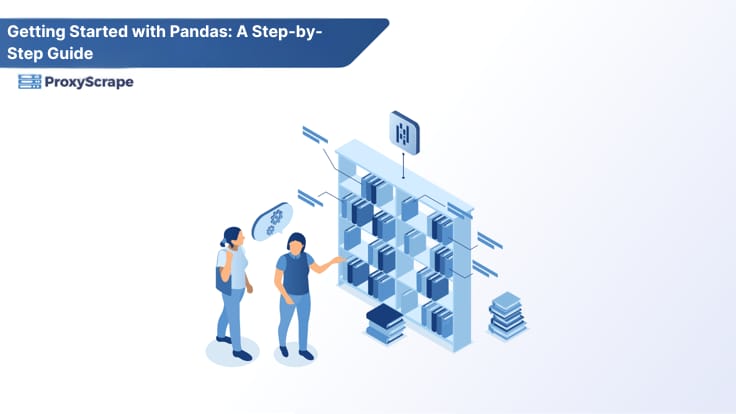If you're new to Python and web scraping, chances are you've come across the term "Pandas." But what exactly is Pandas, and why is it such an essential tool in the field of data analysis and extraction? This guide is here to take you from a beginner to a confident user of Pandas, step by step. By the end of this article, you'll understand what makes Pandas so powerful and how to start using it to work with scrapped data effectively.
Category: Python
The Easy Way to Crawl Sitemaps with Python
By: ProxyScrapeFeb-07-2025
Sitemaps play a crucial role in SEO and web crawling by providing a structured list of URLs that a website wants search engines to index. Instead of scraping a website by following links page by page, crawling the sitemap is a much faster way to discover all available URLs.
How to Handle Pagination in Web Scraping using Python
By: ProxyScrapeJan-17-2025
Web scraping is an essential tool for developers, data analysts, and SEO professionals. Whether it's gathering competitor insights or compiling datasets, scraping often involves navigating through multiple pages of data—a process known as pagination. But as useful as pagination is for user experience, it can pose significant challenges in web scraping.
Exporting Web Scraped Data to CSV, JSON, and Databases
By: ProxyScrapeJan-09-2025
Web scraping has become an indispensable tool for gathering data from across the internet, empowering data analysts, tech enthusiasts, and businesses to make informed decisions. But extracting data is just the first step. To unlock its full potential, you need to export it efficiently into the right format—whether that's a CSV file for spreadsheets, JSON for APIs, or databases for large-scale storage and analysis.
This blog will take you through the essentials of exporting web-scraped data. You’ll learn step-by-step how to work with CSV and JSON files, integrate web-scraped data with databases, and make the most of your data management practices.
Introduction to Web Parsing in Python with Parsel
By: ProxyScrapeJan-03-2025
Web scraping has become an essential skill for Python developers, data scientists, and web scraping enthusiasts. Whether you're extracting data for analysis, building a price comparison tool, or automating content extraction, web parsing is at the core of each of these tasks. But what makes web parsing both efficient and beginner-friendly? Enter Parsel—a powerful library in Python that simplifies HTML parsing and data extraction.
Top 10 Pandas Functions Every Beginner Should Know
By: ProxyScrapeDec-19-2024
Pandas is the go-to library for data analysts and Python programmers venturing into the world of data manipulation and analysis. Its intuitive syntax and powerful data structures make handling vast datasets not only manageable but also efficient. Whether you're importing CSV files, cleaning messy datasets, or analyzing data trends, Pandas has the tools you need.
How to scrape tables from websites – a Python tutorial
By: ProxyScrapeDec-13-2024
Web scraping has become a vital skill for Python developers, data analysts, and anyone working with datasets. When it comes to structured and rich data, tables found on websites are often goldmines of information. Whether you’re scouring the web for product catalogs, sports statistics, or financial data, the ability to extract and save table data using Python is an invaluable tool.
This practical guide takes you step by step through the process of scraping tables from websites using Python. By the end, you’ll know how to use popular libraries like requests, Beautiful Soup, and even pandas to access table data and store it in reusable formats like CSV files.
How to Set Up Proxies in Selenium for Web Scraping
By: ProxyScrapeNov-27-2024
When working with Selenium for web scraping or automation, integrating proxies is a must. Proxies allow you to bypass bans, rate limits, and geo-restrictions, making your tasks seamless and efficient. But configuring proxies in Selenium can be a challenge, especially if you’re dealing with authentication or need to monitor HTTP requests. That’s where Selenium Wire comes in.
How to Scrape eBay in 2024: A Beginner's Guide
By: ProxyScrapeNov-21-2024
eBay is one of the world’s largest online marketplaces, hosting millions of products across various categories. Scraping eBay can be invaluable for tasks like:
- Price Comparison
- Market Analysis
- Tracking Product Trends
In this guide, we’ll show you how to create a simple Python script to search for a keyword, extract product details like title, price, currency, availability, reviews, and ratings, and save the data into a CSV file. This tutorial is great for beginners who want to learn web scraping the right way, with tips on respecting terms of service and using proxies responsibly.
